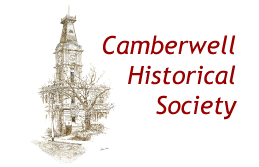Places Of Camberwell
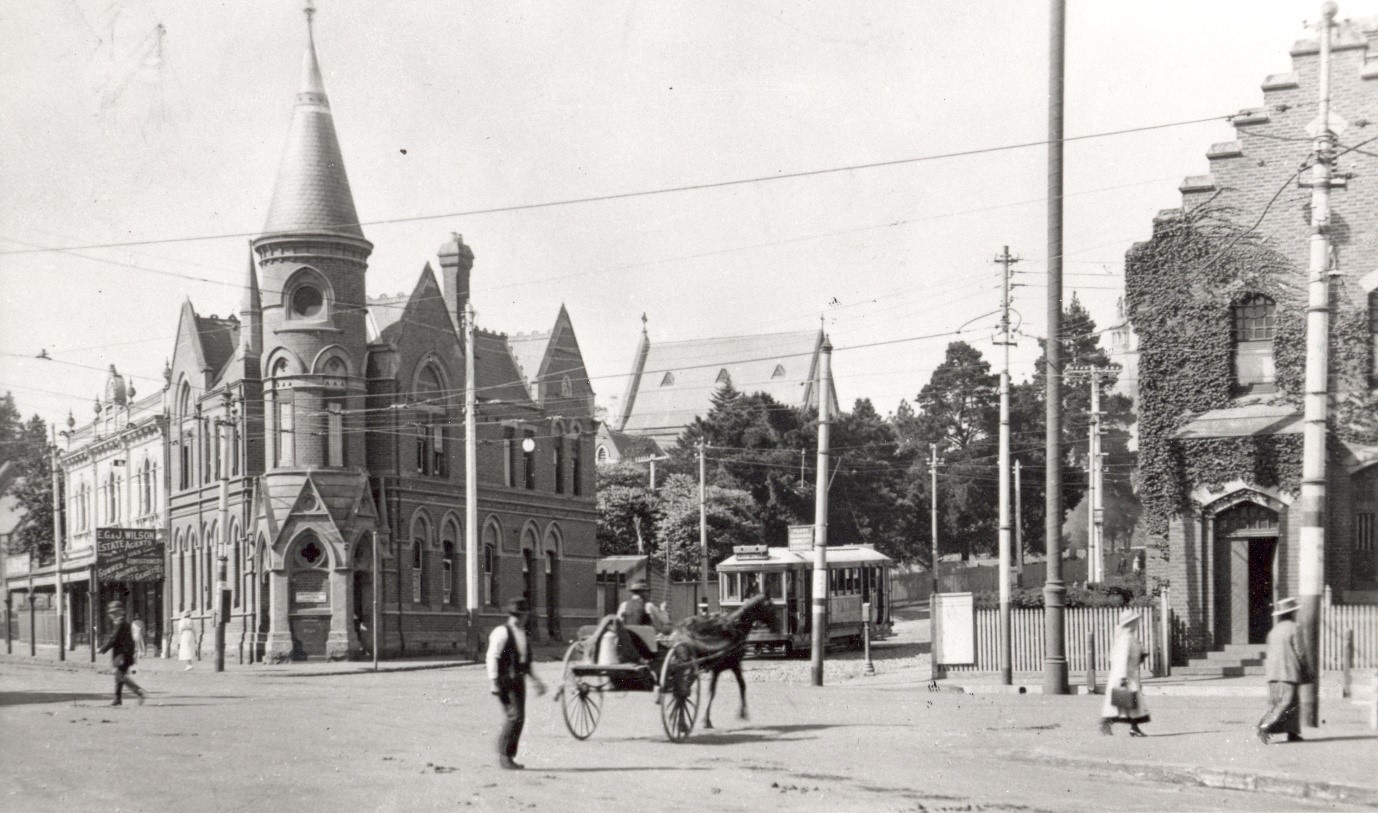
Camberwell Post Office
Camberwell Post Office opened on 12 October 1864, the one pictured was built in 1890 and was demolished in 1963.
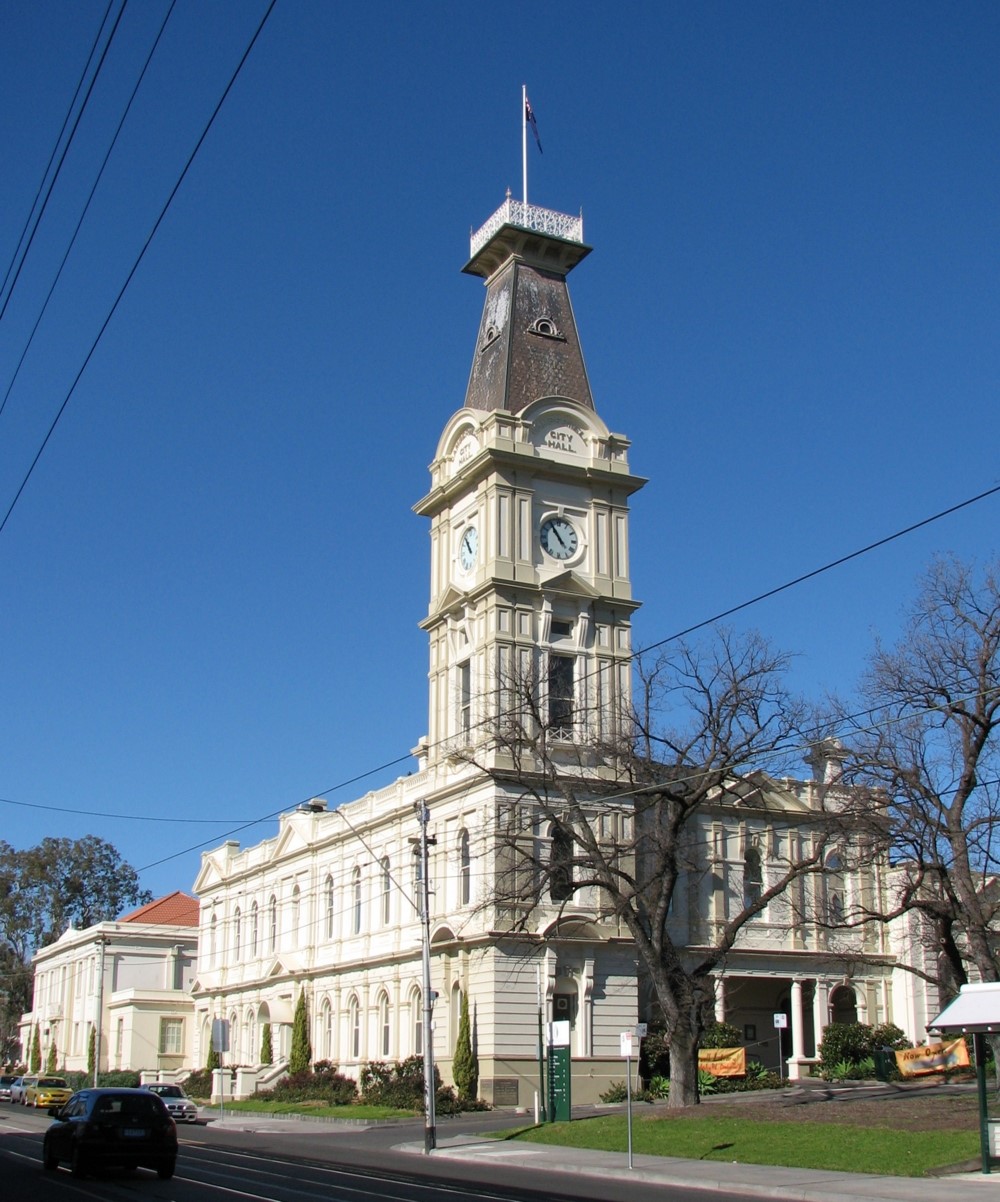
Camberwell Town Hall and Civic Centre
The Camberwell Town Hall was built during the Victorian period in 1891 in the free classical style.
After the amalgamation of the City of Camberwell with the Cities of Hawthorn and Kew on 22 June 1994 to form the City of Boroondara, the Town Hall with the Camberwell Civic Centre became the main municipal offices. Recently renovated, updating the library and painted 2015.

St John’s Anglican Church
In 1863 a simple brick church was opened where St John’s now stands. It had seating for 130 worshippers. The parsonage was built in 1868.
As early as 1869 part of the original church had to be demolished to make way for extensions. Other additions were made, a bit at a time, until by 1924 nothing remained of the original church. In its place stood a large brick gothic revival edifice with a bell tower and spire, much fine stained glass, a pipe organ and seating for 800 people.
Except for the bell tower and spire, this grand building was destroyed by an arsonist in 1955. Within two and a half years, the present church was completed to a design by Louis R. Williams. Later it was found that the bell tower and spire had been seriously damaged by the heat of the fire and they had to be demolished.
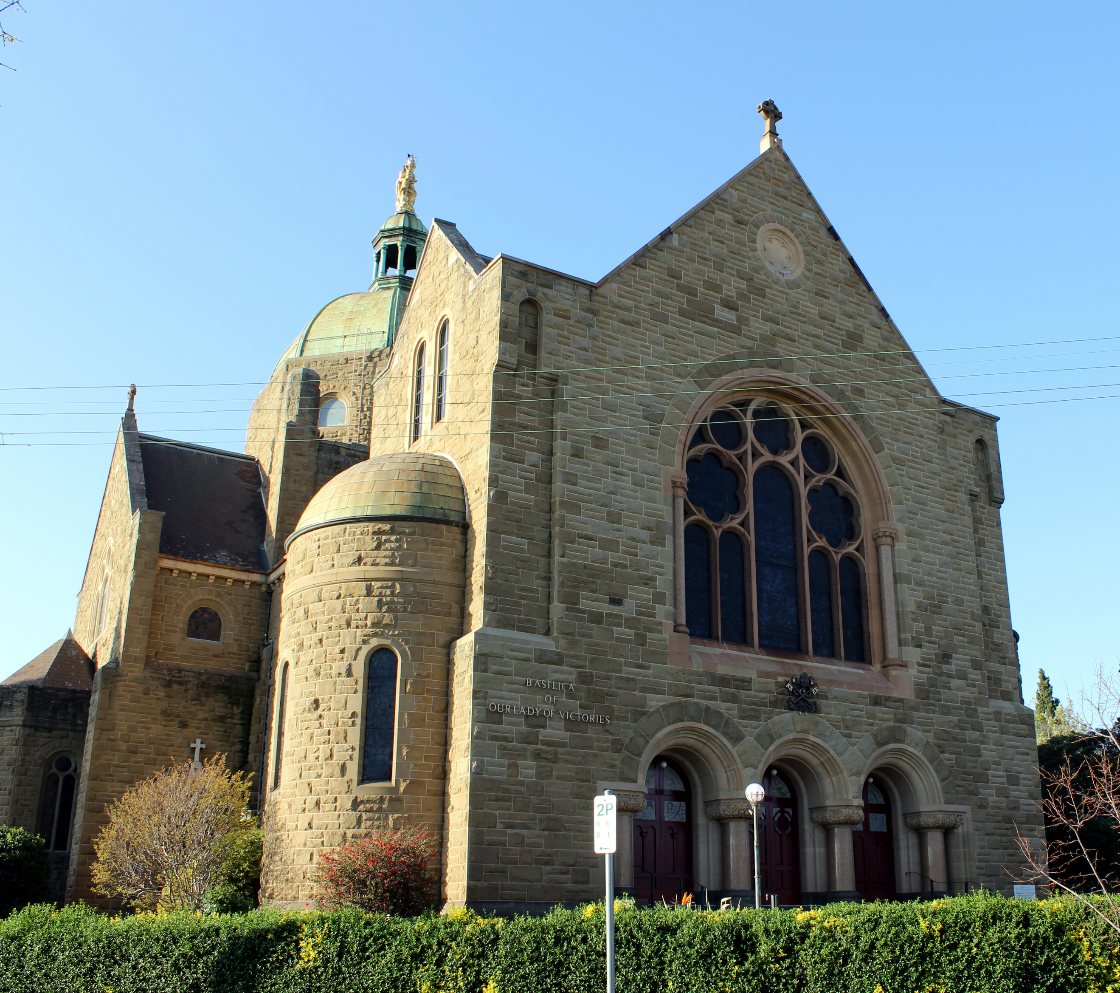
The Basilica of Our Lady of Victories
The foundation stone was laid in 1913, and the press of the day estimated the crowd at somewhere between 15,000 and 45,000, with 12 special trains from Flinders Street totally inadequate to cope with the crowds. The opening ceremony was held on 6 October 1918. Again there were huge crowds, this time estimated to be 80,000. It was finally consecrated on 25th May, 1925. The facade has been renovated in 2016.
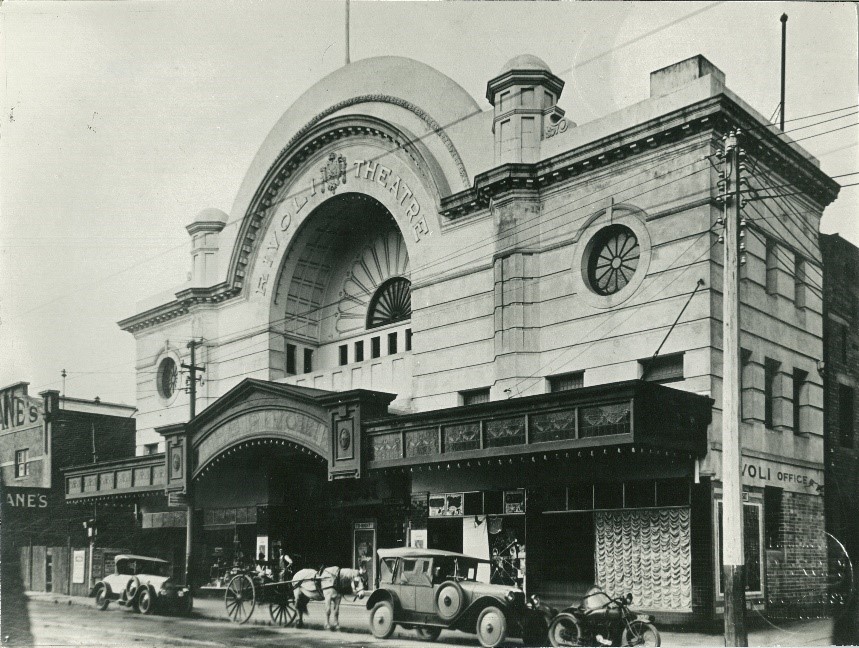
Rivoli
Rivoli Theatre Burke Road
The new Rivoli Theatre was built in Camberwell Road, Camberwell and was opened by the Mayor of Hawthorn, Joseph Pridmore, on 11 October 1940. It replaced an earlier Rivoli Theatre which had opened in 1921 on the east side of Burke Road. Robert McGleish, a notable figure in Melbourne’s cinema history and the manager of the original Rivoli Theatre, was responsible for the construction of this new large decorative cinema, which was designed by architects H Vivian Taylor and Soilleaux.
Like most cinemas built in the 1930s, the architects adopted the Moderne style in their design of the new Rivoli.
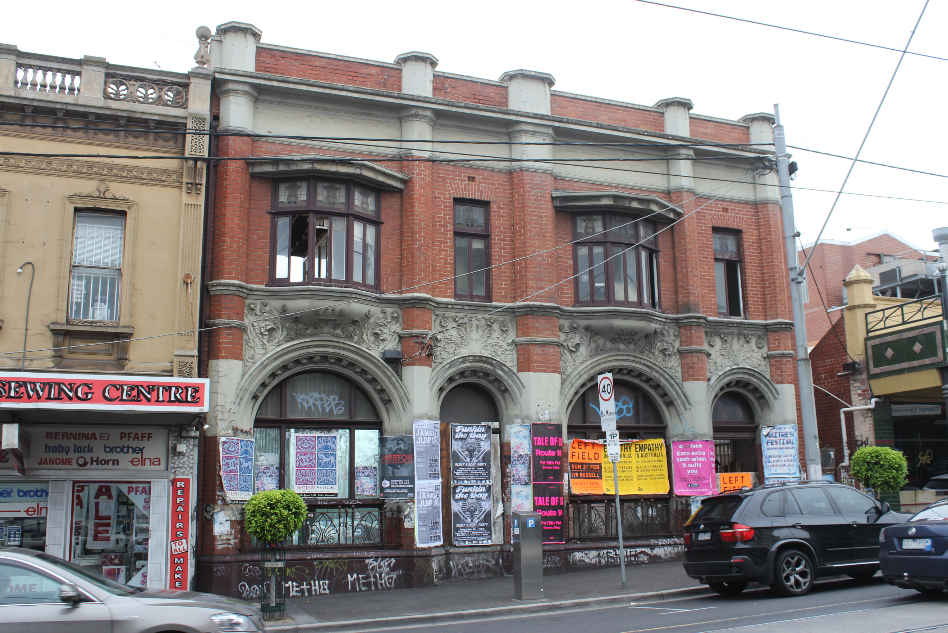
Former State Savings Bank, 851 Burke Road Camberwell
This is a very significant bank facade designed by the noted architects Sydney Smith & Ogg in Romanesque revival style. With the former ES&A Bank (now the Meat and Wine Company) this is the most important architectural heritage item in the Burke Road shopping precinct.
Uniting Church and its Manse
300 & 316 Camberwell Road
The church began here in 1871 as the Camberwell Methodist Church and since church union in 1977, it has been part of the Uniting Church.
Camberwell Primary School No.888
290 Camberwell Road
Opened 19 August 1866 with 34 students but opened on present site in 1868 and you can still see that building if you look carefully. 150 students were enrolled in the new building but by 1900 there were nearly 1000 students enrolled.
Camberwell Court House and Police Station
311-317 Camberwell Road. Built in 1939 by Percy Everett. Cost £3759. Style “Streamlined Moderne”
The original court house was part of the 1890 Boroondara Shire Hall. The Court House closed in 1989.
The Camberwell Police Station and Court House Complex was designed by Public Works Department architect, Percy Everett; the complex was built by WA Medbury between 1938-39. The complex is in the Moderne style and is set on a diagonal axis. The buildings are constructed of red, brown and manganese bricks and contain Everett’s trademark pattern detailing. The complex still retains a law enforcement function, as the court house is now used for tribunal work.
The Camberwell Police Station and Court House Complex is of architectural significance as an exceptionally fine and intact example of a building complex designed by notable architect, Percy Everett. Everett, the Chief Architect of the Public Works Department at the time, was influential in the design and evolution of Moderne style buildings in Victoria and the Camberwell Police Station and Court House Complex is an early and outstanding example of the style.
ES & A bank building
The former English, Scottish and Australian (ES&A) Bank building, located at Camberwell Junction at the juncture of Riversdale Road and Burke Road, is now operating as the Meat and Wine Co restaurant. The Former E.S. & A. Bank, Camberwell Junction was erected in 1885. The contractor was Alfred George Moore and the architects were Wardell and Vernon. The two storey brick structure has a simple slate clad roof with stepped gables.
The main entrance to the building is from Riversdale Road and is expressed by a projecting vestibule. The Burke Road elevation contains a centrally located bay window on the ground floor. Stylistically this bank is reminiscent of the Northern European architecture and is unique in Victoria. It belongs to a group of former E. S. & A. Banks which in their unusual styling and their association with a particular bank constitute a highly significant group.
Camberwell Masonic Temple
12 Prospect Hill Road
Canterbury Lodge used this building from 8 May 1926 to 3 December 2001.
Camberwell Railway Station
Camberwell railway station opened on 3 April 1882.
The station was demolished, and the current Edwardian style station opened in 1919, when the railway lines were placed in a cutting. This was done partly to remove the steep gradient from Auburn, to the west. This length of track was so steep that steam locomotives could not pull a fully laden train between the two stations, requiring peak hour trains to be separated. The locomotive would bring one set of carriages to Camberwell, then return for the other set, causing significant delays.
Prospect Hill
The Prospect Hill area is adjacent to the railway station and is the oldest part of Camberwell. The original subdivision was relatively generous blocks, which were quickly filled with fine Victorian and Edwardian houses. Due to its hilly topography, many east-west streets in the Prospect Hill area have an excellent view of Melbourne’s Central Business District.
Palace Hotel
founded 1888
